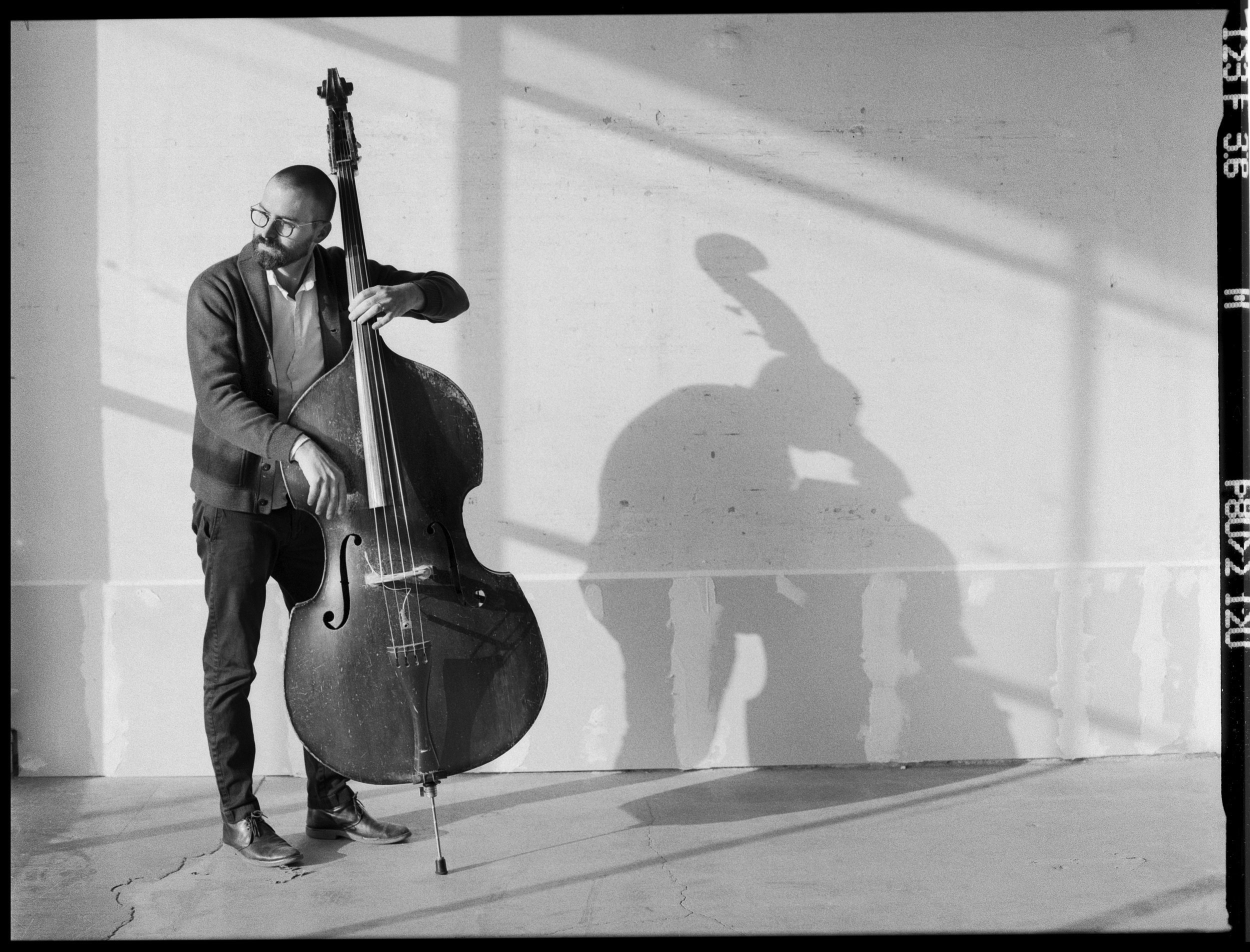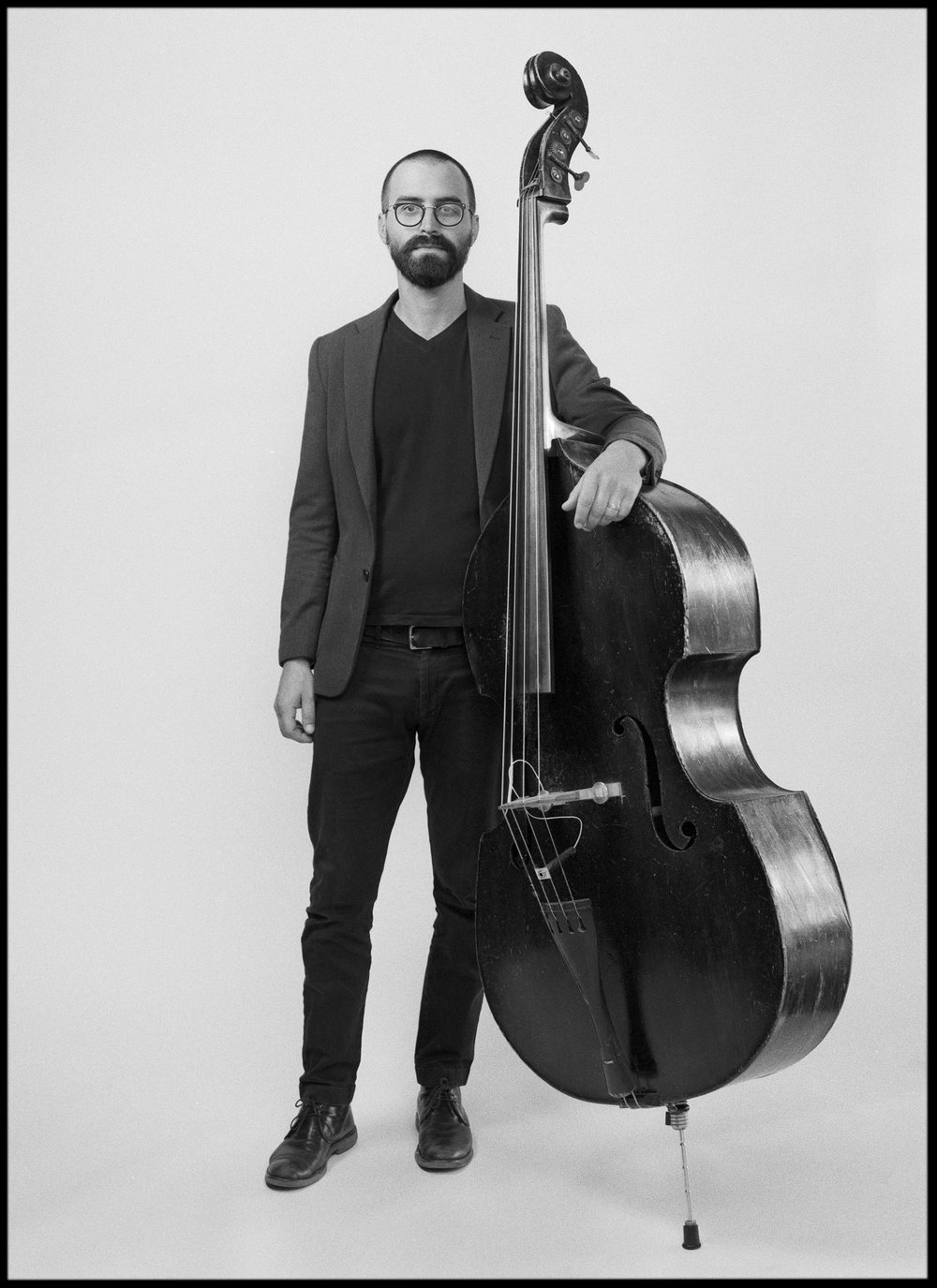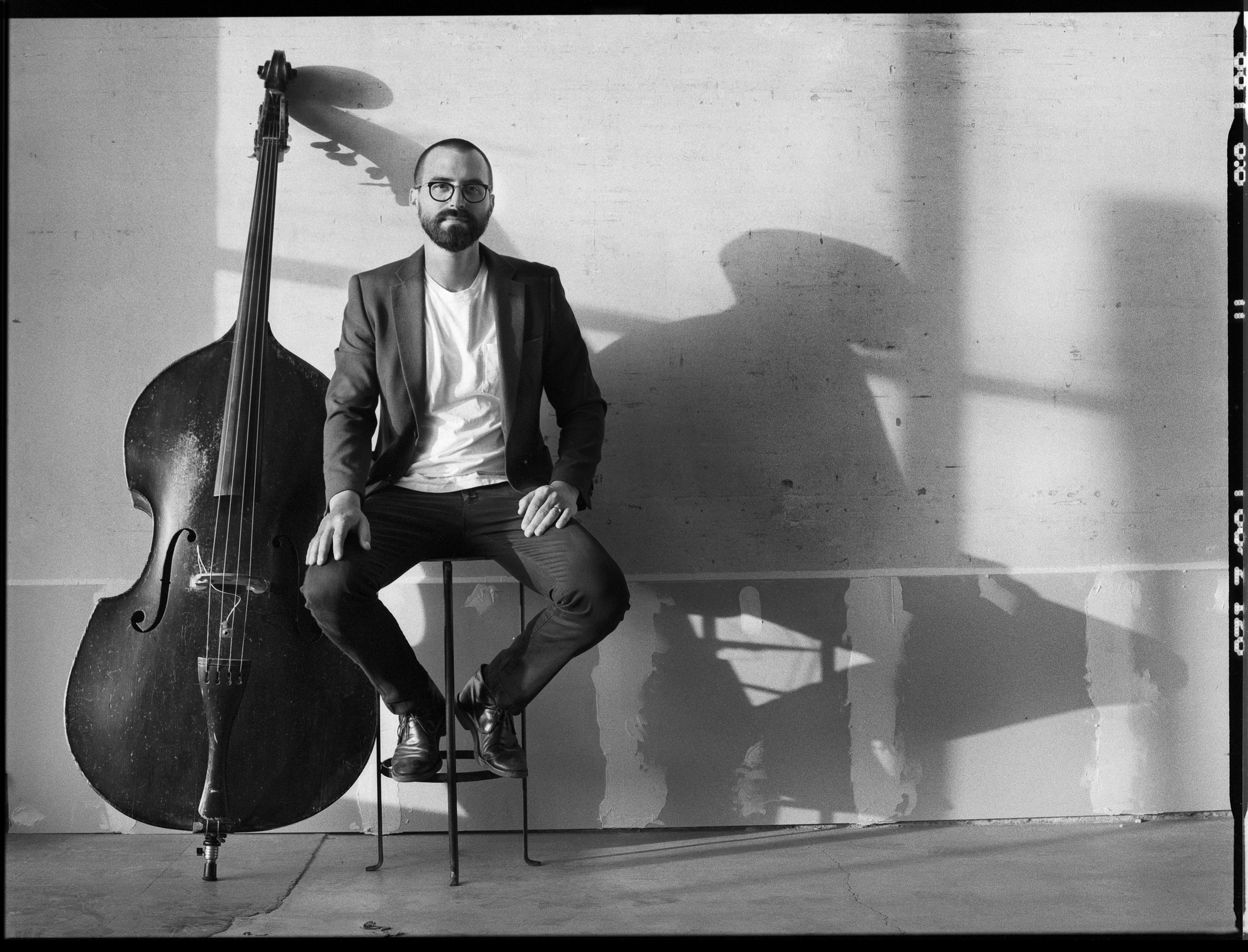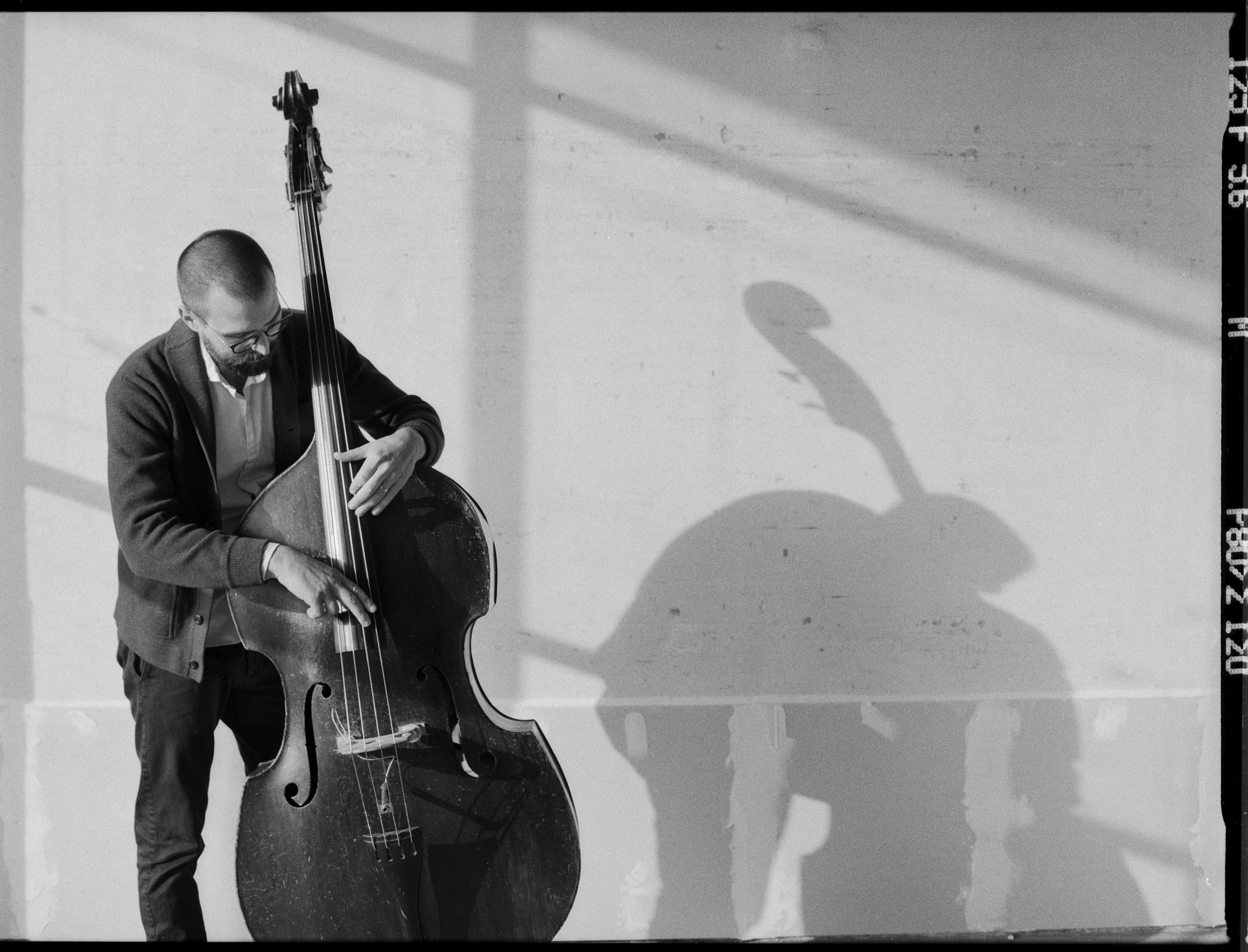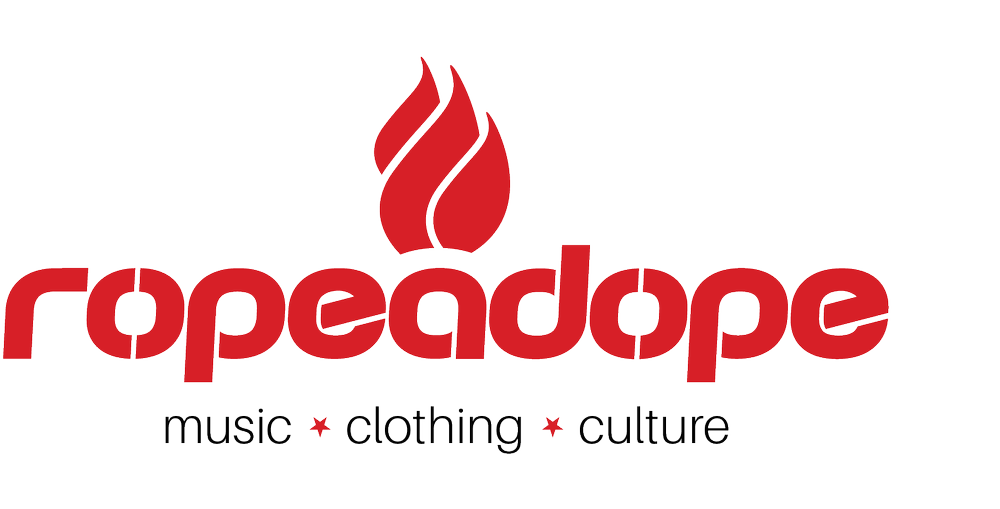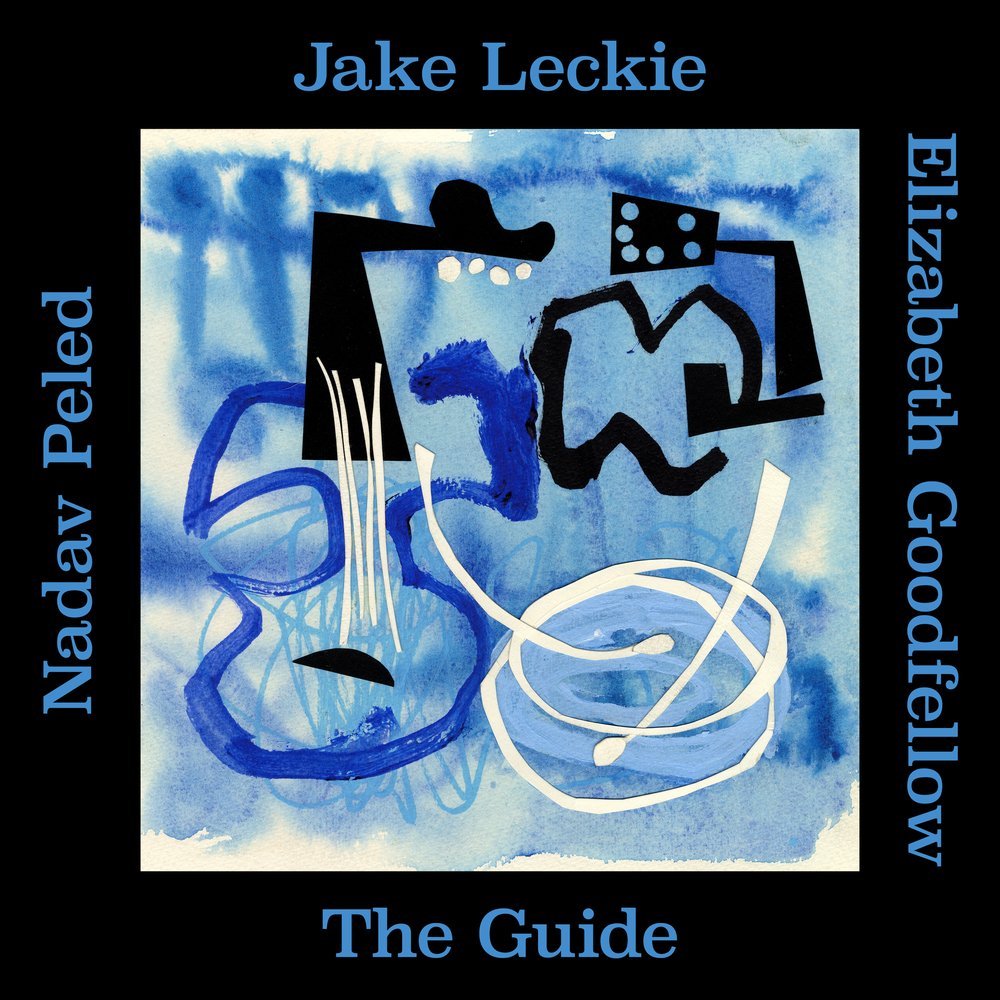JAKE LECKIE
Firmly rooted in the jazz tradition, bassist Jake Leckie’s playing is informed by classical, gospel, latin music, and hip-hop. His credits include touring with Sixto “Sugarman” Rodriguez, traveling to the Havana Jazz Festival to perform with Spanish saxophonist Gianni Gagliardi, recording two albums with Canadian pianist/composer Cat Toren for her Human Kind project, recording and touring with The Harlem Gospel Travelers, and playing at several notable venues with piano prodigy Matthew Whitaker, including The Apollo Theatre, and Newport Jazz Festival where he was introduced on stage by bassist Christian McBride.
He recorded his debut album The Abode with trumpeter Kenny Warren, pianist Sebastien Ammann, and drummer Nathan Ellman-Bell, which was released on Outside In Music in 2019 to critical acclaim. During the pandemic he formed a trio with guitarist Nadav Peled and drummer Elizabeth Goodfellow who play on his second album The Guide, to be released on Ropeadope in April 2022.
Leckie was born in Boston, MA, and developed an interest in improvised music at a young age. His first bass teacher, John Lockwood, played a weekly set with the legendary free jazz trio, The Fringe (George Garzone, Bob Gullotti), and this approach to spontaneous music making was highly influential. He vividly remembers listening to a recording of Bill Evans trio playing Autumn Leaves, and Scott LaFaro’s solo leaving an indelible impression. Growing up in Brookline, MA, he recorded with avant-noir pianist Ran Blake, reggae guitarist Lyn Taitt, and long time friends Eli “Paperboy” Reed and Eli Keszler.
Leckie earned a degree in Anthropology at Johns Hopkins University in Baltimore while studying bass with Michael Formanek, who introduced him to the compositional and group improvisational style of Charles Mingus. He earned a Masters in Audio Science from the Recording Arts department of the Peabody Conservatory where he was introduced to the string quartets of Debussy and Ravel, and the Pablo Casals recording of the Bach Cello Suites, which he still practices every morning. He found opportunities to study and play with Baltimore’s finest musicians including Warren Wolf and Dave Ballou, and backed up several local artists including Cris Jacobs and Eva Castillo. He was a teaching artist at Orchkids, an outreach program of the Baltimore Symphony Orchestra, that performed with Yo-Yo Ma.
He studied chamber and baroque music in Montreal, and performed at the Montreal Jazz Festival. During a formative semester in Spain, he was the house bassist in the multicultural genre bending WTF! Jam Session at the Jamboree Club in Barcelona where sometimes standards were called, and sometimes they said “WTF let’s just play.” He studied Cuban music with Hilario Duran and Roberto Occhipinti, and formed the tango band The Mash Potangos. The group toured in the US and Canada, performing traditional tangos for dancers as well as the music of Astor Piazzolla. They were awarded a Canada Council for the Arts grant to record their second album, Nightshades. He formed an experimental tango group with pedal-steel guitarist Susan Alcorn, a latin jazz trio with Cuban/Venezuelan pianist Cesar Orozco, a Brazilian choro group Snail Knights, and played with the salsa bands Avance, The Pacific Mambo Orchestra, and La Granada All-Stars.
His gospel playing was developed on Sundays at the Greater Faith Baptist Church in Baltimore and at the Parkchester Baptist Church in the Bronx. He was a regular participant in the Baltimore Boom Bap Society, a hip-hop collective that featured several notable guest artists including Ursula Rucker (of The Roots). He was in the bass section of The String Orchestra of Brooklyn, and was a member of the Out Of Your Head improvised music collective. He has performed with avant-garde saxophonist Matana Roberts, and played at Mintons, Smoke, The Blue Note, Smalls, 55 Bar, and Symphony Space. Through his sideman work, he has shared the stage with world-class drummers Justin Brown and Thomas Pridgen, and travels to San Francisco semi-annually to play a week-long residency with Christopher McBride and the Whole Proof at The Black Cat.
Leckie was a staff recording engineer at The Banff Centre in Alberta, and worked as an engineer and producer in Brooklyn at The Bunker Studio and Figure 8 Studios, which led to collaborations with Snack Cat, Danny Jonokuchi, Shahzad Ismaily, Marc Ribot, and composer David Cieri. He produced several albums, including Chris McCarthy’s Ropeadope release Still Time To Quit, and mixed five albums by Thumbscrew (Mary Halvorson, Michael Formanek, Tomas Fujiwara).
Leckie now resides in Los Angeles where he is on the music faculty at Los Angeles City College, and collaborates with like-minded improvisers Hitomi Oba, Logan Hone, Vardan Ovsepian, Nick Mancini, John Tegmeyer, and Josh Nelson. He plays in the dusty jazz-soul trio Roll$ Roy¢e with drummer Shawn Baltazor and guitarist Nadav Peled, and composes, arranges, and plays bass in the jazz-chamber music ensemble The Pickaxe String Collective with Will Brahm, Lauren Elizabeth Baba, and Karl McComas-Reichl. He works steadily as a composer, and his music can be heard on PBS, BBC, HBO, CNN, and NBC. Recent performances include Hardly Strickly Bluegrass Festival in San Francisco, Pilgrimage Festival in Nashville, and Angel City Jazz Festival in Los Angeles.
THE GUIDE
Release Date: April 8, 2022
Jake Leckie - Upright Bass
Nadav Peled - Acoustic Guitar
Elizabeth Goodfellow - Drums
All Compositions by Jake Leckie
Recorded at 64 Sound in Highland Park LA, May 3 2021
Produced by Jake Leckie
Engineered by Bryce Gonzales
Mastered by A.T. Michael MacDonald
Cover Art by Wayne White
Layout by Saya Russell
The Guide is an acoustic folk-jazz trio recording with Jake Leckie on upright bass, Nadav Peled on acoustic guitar, and Elizabeth Goodfellow on drums. Eight original compositions, penned by Leckie, were recorded live in the same room to 2-track analog tape with Bryce Gonzales engineering at 64 Sound in Highland Park, Los Angeles. The recording session was on May 3, 2021. Almost all of the songs were recorded in one or two takes between the hours of 11am and 6pm. There were no headphones, isolation booths, or overdubs involved. What you hear was what was played live off of the floor that day.
The music was written pre-pandemic, and recorded once the trio could safely return to the studio. Throughout the pandemic, the trio played a weekly outdoor, masked, and social distanced jam session in Leckie’s front yard known as “Quarantunes,” at first working through the American Songbook and jazz standards, and later introducing original compositions. These sessions became an anchor not only for the trio, but for the community of neighbors and other local musicians who would bring out their families each week to enjoy the music. During that year, while keeping the music alive, the trio developed a cohesive sound, trust, and familiarity which can be heard on this recording.
Visual artist Wayne White, a neighbor and Quarantunes regular, created the abstract cover art for the album based on his impressions of the trio’s interplay, and inspired by jazz album art of the late 1950s (such as Neil Fujita’s painting for Mingus’s Ah Um).
The music is organic, triadic, and in the pocket. Honest, singable melodies are supported by compelling harmonic movement. The simple acoustic instrumentation, tape format, and interactive playing style give the album a cohesive and intimate vibe which can be enjoyed from the first note to the last vamp.
About the compositions in Leckie’s words:
Whereas my first album The Abode was about the concept of migration and searching for a home, the collection of music in The Guide explores the experience of settling in and putting your roots down in a new place.
The Guide, the title track, is dedicated to those individuals who knowingly, or unknowingly helped me along my way - especially my mentors. Some of these people have been in my life for a long time, but some show up and are in my life for a brief but important period. It has a 6/8 gospel feel to reflect the generous spiritual guidance these individuals have offered me.
Patience is about learning how to wait. When I first moved to Los Angeles, I wanted things to move at a New York pace, but found myself pushing and not getting anywhere. When I let go, things began to happen. You can hear that tension and release on the bridge where the hemiola makes you wait for the downbeat of the last section.
A Thing of Beauty is named after the Keats poem, A Thing of Beauty is a Joy Forever. My wife’s grandfather used to leave little notes around the house for his wife to find - in a cupboard or on the side of a desk. This was written on one of those notes, and to me it is a reminder of the little acts of love that make up a long relationship.
The Place Between is about a sort of limbo, or purgatory, when you move from one place to another and you don’t feel quite settled. The vamp at the beginning and end has an “irrational” time signature, a measure of 4/6, interpreted as a group of 4 triplets, which has the effect of making the time float for a second before it snaps back into focus. The minimalist approach and the use of harmonics and ethereal percussion puts the listener on a road in the desert between two oases.
At a particularly low point for me, an old friend visited me and gave me some Tough Love. He told me some things that I really had to hear, which were difficult to hear at the time, but helped me get through this difficult period. This moody track is evocative of that time, bluesy and emotionally charged but hopeful all the same.
The Good Doctor is dedicated to Dr. John who passed away recently. He wrote a beautiful piece of music for his mother, Dorothy, a song in a major key with a descending harmonic motion, which inspired a similar harmonic motion but in a minor key. It begins with an extended bass cadenza before the band rolls into a cyclical ostinato in ¾ time. The solos are over a minor blues, and the ending has a 7 bar vamp that seems to have no beginning or end.
Adobe is a response to my first album, The Abode. Adobe is one of the oldest building materials, and when I think about building my music and community around my music I am tapping into some of the oldest social building materials we have - friendship, trust, and consistency. A rollicking post-bop minor shuffle, with the kind of energy I would have found at an after hours jam session in the West Village in Manhattan - the kind of energy I want to bring from my old home in New York to my new one in Los Angeles.
In any music scene, I have found there is always The Gatekeeper, or several gatekeepers who you need to get through to get the gigs. The intro/interlude part is a difficult fiery unrelenting polyrhythm with groups of 5 eighth notes over 7 half notes, and once you break through it, the up-tempo swing is really quite fun and liberating to play over. This track features Elizabeth’s highly musical and melodic drumming in an extended solo. At the end there is a lo-fi hip-hop outro vamp to cool everything off.
